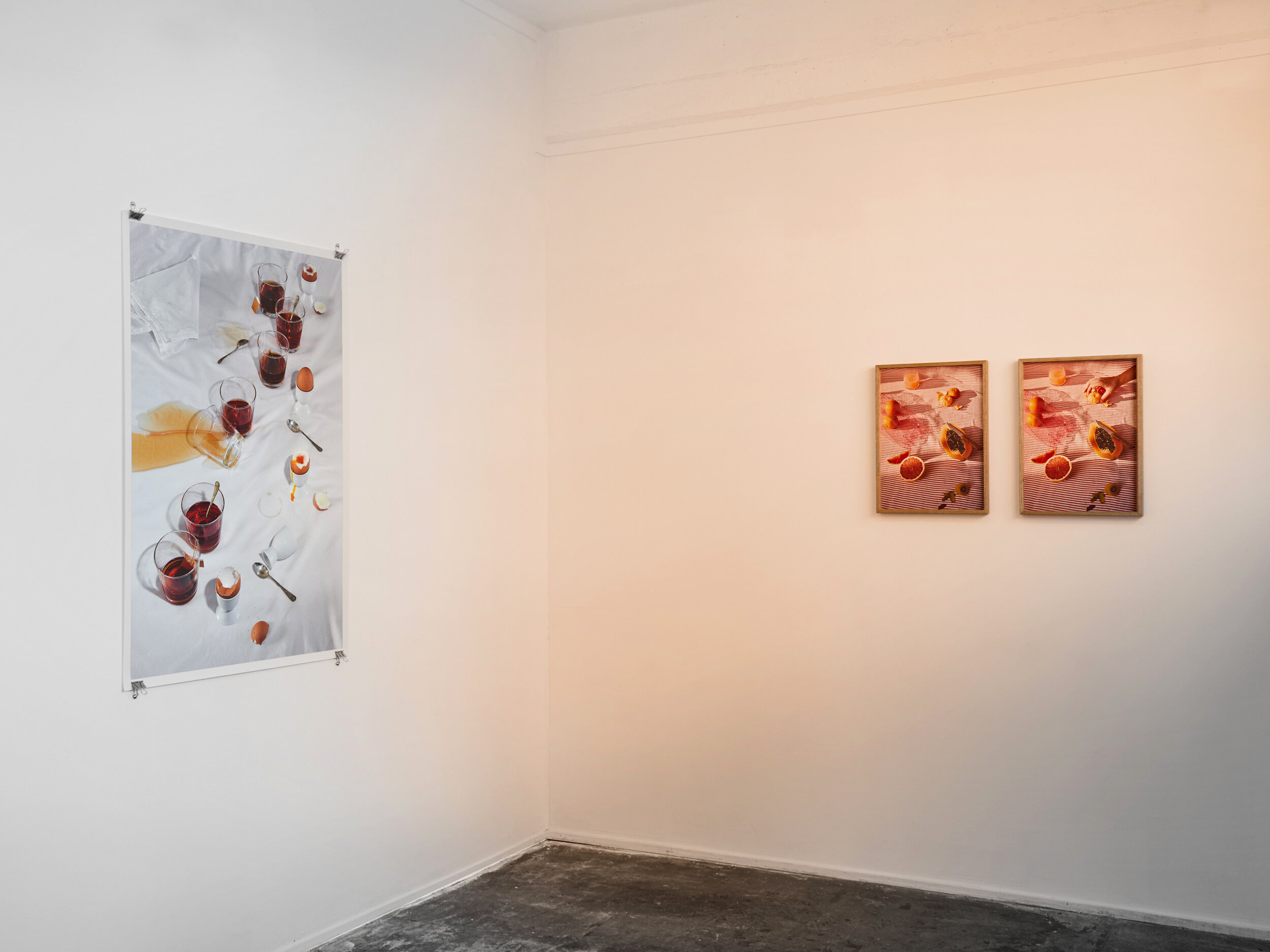Fruit Work 1 & 2
Archival Inkjet Prints
Keep It Unreal
BUS Projects
13 February - 09 March, 2019
A few years ago on a road trip, I invented a game. It’s simple – while looking at a random object, the player imagines how heavy it will feel when they pick it up. The player then tests their theory and reports if it feels heavier or lighter than they imagined. It’s not competitive; the game relies on remembering past experiences to predict how something will feel.
My photographs work in the same way. I make images by recreating a memory of familiar subjects. The images fit into the real world but ask “what do you want to remember?”
Throughout the 1960s and 70s The Eastman Kodak Research Laboratory used the expectation of what certain things should look like as a tool for improving their colour films for consumers. The imaging scientists found that technically ‘correct’ colours didn’t always satisfy the human minds memory of how certain things look. The research involved presenting test subjects with a range of colour values in prints and Kodak found that people preferred colours pushed far beyond their real colorimetric value. In other words, they thought that grass appearing far greener than it really is “looked right” and so Kodak adjusted their films accordingly. The memory of grass-green was more powerful than the real green and as artist and writer Claire Lehmann put it, “the technologies that record our memories have been materially imbued with memory’s subtle alterations”.
The idea of a documentary truth in photography has to be abandoned. The overwhelming evidence is that we want to remember things just how we like them. Each memory is carefully crafted to tell an idealistic story within an image. This is nothing new, one of the earliest ‘documentary’ photographs caused a scandal as the photographer had shuffled cannon balls around a field to create the image he wanted of the American Civil war.
Skin tones in portraits require careful balancing within an expected colour range and some early films were developed in favour of appealingly tanned Caucasian skins. The contemporary film Portra 160 has been specially adapted for a wide range of flattering portraits as well as being refined for its qualities of fitting into a digital workflow based on the assumption that most prints are currently made from digital scans.
Virtual sliders and numeric input values in high-end image processing software use the colour palette of imagination and memory to create the images of seduction we see today. Instagram’s ‘Explore’ page employs an algorithm to present what they think you like. I recently spoke to a photographer who remarked that his Explore page is “nothing but black and white still lifes of flowers”. We now have a personalised version of the research that Kodak performed and photographs of the world are automatically sorted for our satisfaction.
The mind wants to make the leap to equate a photograph with reality, and my photographs in this series play on the edge of what our memories want. To quote artist and academic Colleen Boyle, as photographers we “ask the viewer to bridge the gap between what they know and what can be imagined.” We create a picture of something that doesn’t exist, with a perfect apparatus, and bend the images to fit how we imagine the world.
Exhibition Catalogue: The World We Want To See
Gallery Website: Bus Projects - Keep It Unreal









